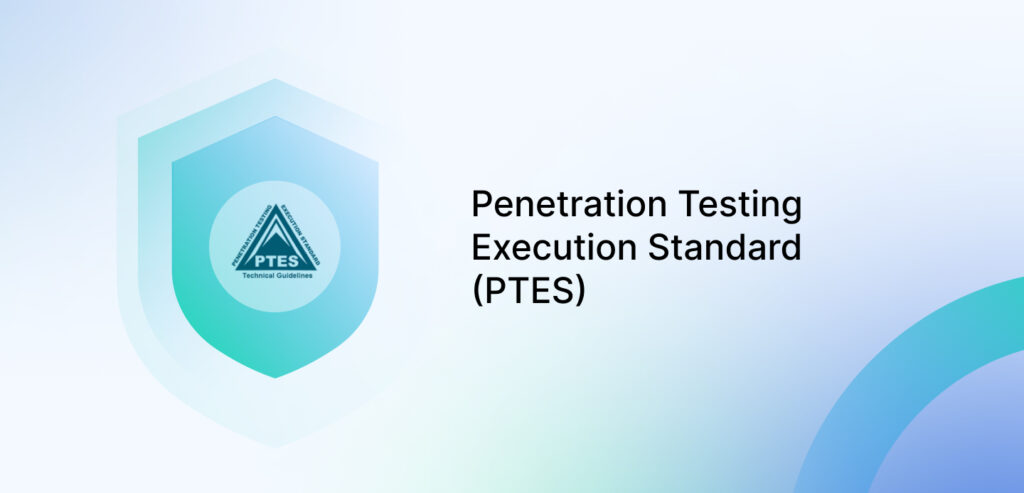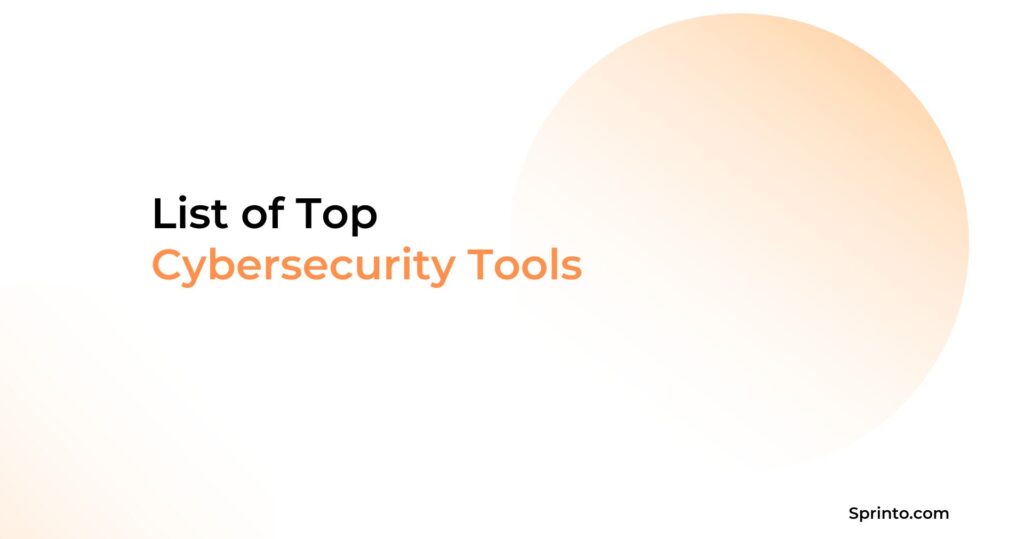List of Penetration testing methodologies
Ayush Saxena
Jan 08, 2025
The digital age opens up new opportunities as well as avenues for cyber attacks. It is the need of the hour for all businesses to ensure the safety of their systems and applications. How do you know that your business is safe? How do you weigh your cybersecurity infrastructure against sophisticated methods used by hackers? Penetration testing helps answer these questions and more.
A penetration test helps evaluate if certain objectives of the program have been fulfilled such as sustaining 99.99% availability during an attack, or ensuring data loss prevention (DLP) systems are working towards blocking potential attackers from exfiltrating data.
Source: Purplesec
Pen tests, sometimes referred to as white hat attacks, involve a benevolent party’s attempt to breach into a system to aid in identifying and addressing vulnerabilities.
Penetration testing plays a crucial part in simulating the behavior of a potential hacker. A variety of penetration testing methodologies have been established to enable security professionals to achieve this effectively and safely.
In this blog post, we will discuss the leading pen testing methodologies and frameworks, what stages they involve, and what aspects they cover.
What is penetration testing methodology?
Penetration testing methodology is a specific set of policies and procedures employed by the pentest provider to conduct the pentest of a target network or website. There are multiple penetration testing methodologies that can be used depending on the goal of the pentest, the category of the target business, and its scope.
Pen testing methodology is the exercise of testing a web application, computer system, or network to identify security vulnerabilities that a hacker could exploit. Pen testing can be performed using automated tools or manually and follows a defined methodology.
It involves the attempted breaching of any number of applications, networks, or systems (e.g., protocol interfaces, APIs, applications, frontend/backend servers) to uncover vulnerabilities. For instance, unsanitized inputs that are susceptible to code injection attacks.
Insights shared by the penetration test can be used by your IT or security team to fine-tune your WAF security policies and address detected vulnerabilities. The five main kinds of penetration testing are blind testing, targeted testing, external testing, internal testing, and double-blind testing. Each type of testing gives hackers a different level of access to an organization’s applications and systems.

Meet our compliance experts
Join our Compliance Q&A
Fastrack your audit with on demand guidance.
Why penetration testing methodologies are important”?
Penetration tests help determine how well an organization’s current security posture could defend against a determined adversary armed with an array of attack vectors. This lets you address security gaps before attackers find and exploit them.
Pen testing methodology helps prevent unauthorized access, phishing attacks, social engineering attacks, application vulnerabilities, database attacks, simulated attacks, common network-based attacks, advanced attack scenarios, persistent threats, insider threats, and safeguarding critical systems against malicious attackers.
A few key advantages of penetration testing are:
Uncover hidden system vulnerabilities before criminals do
Identifying and exploiting previously undiscovered security flaws before hackers do is a priority for organizations. Penetration tests divulge deficiencies in cybersecurity plans that might have been initially overlooked. They help prioritize risk by focusing on what is most likely to be exploited and dedicating resources accordingly.
Bonus: Want to strengthen your network defences? Get our External Network VAPT Report and discover critical insights.
Download your External VAPT report to start securing your network
Strengthen security processes and strategies
You need to analyze the summarized results of a penetration test to know how secure your IT systems really are. By identifying the security holes and the possible damage they could cause, security executives at your organization can ensure prompt remediation. A skilled penetration tester may help you build a solid information security infrastructure while determining where you should allocate your cybersecurity resources and budget.
Lower remediation costs and reduce dwell time
As per IBM’s Cost of Data Breach 2022 research, the typical time needed to detect and mitigate a data breach is 277 days. Longer the company software and sensitive data are exposed to malicious hackers before being identified, the more damage they can inflict, and greater the repercussions are.
Loss from downtime, loyalty, loss of brand image, poor network performance, reputation damage, and customer loss, compound the financial implications linked to cybersecurity breaches and assaults. On the other hand, penetration testing helps uncover a cyber breach source before it is exploited for a fraction of the cost.
Adhere to regulatory compliance around privacy and security
Penetration testing aids businesses in strengthening their security policies while demonstrating to assessors that they are diligent about their security posture, thanks to the extensive reports created during the testing. All firms must regularly undertake audits and tests of security systems to comply with regulations like HIPAA, SOC2, GDPR, PCI-DSS, ISO 27001, and others.
Preserve brand reputation and customer loyalty
In light of the constant reports of data breaches in the media, customers want to know that their information is secure while conducting business with an organization. A penetration test is one way to testify that a business is secure.
Want to achieve comprehensive cybersecurity that goes beyond the realms of penetration testing? Get in touch with us today!
List of penetration testing methodologies
There are several leading pen testing standards availible, each with its own unique approach, scope, and areas of focus. In the following section, we will deep dive into the top 5 pen testing methodologies employed by security professionals and organizations.
Here is the list of most popular penetration testing frameworks and methodologies:
Open Source Security Testing Methodology Manual (OSSTMM)

OSSTMM, or the Open Source Security Testing Methodology Manual, is a penetration testing framework that is peer-reviewed and used for performing security tests, penetration tests, and metrics. Created by ISECOM, or the Institute for Security and Open Methodologies, the OSSTMM focuses on testing the operational security of applications and systems from an attacker’s perspective.
Some key features of the OSSTMM include:
Operational focus
In addition to identifying technical vulnerabilities, it also tests operational processes, human elements, physical security, telecommunications, wireless security, etc, to provide a holistic view of the company’s security posture.
Channel testing
Analyzing the into and out of communication channels within an organization, such as Bluetooth, VoIP, web, WiFi, telephone, SMS, email, etc.
Metrics and measurements
As part of the testing process, the OSSTMM introduced the idea of using scientific metrics and measurements. This allows quantitative analysis instead of just pass/fail assessment.
Trust analysis
Based on perational controls, evaluation of how much the penetration test target can be trusted to keep up its security properties.
Also, check: Best 12 Penetration Testing Tools in 2023 [Pricing + Feature Comparison]
Attack surface
Identify the different points where an attacker may try to enter or extract data from a system.
Although initially, the OSSTMM focused on network security, it has evolved over the years to cover more aspects of operational security, human factors, telecommunications, wireless, cloud, mobile security, and IoT.
NIST Special Publication 800-115

The National Institute of Standards and Technology, is a federal agency that promotes standards in various sectors, including computer security. NIST Special Publication 800-115 provides technical guidelines for conducting vulnerability analysis and penetration testing.
Some key features of NIST 800-115 include:
Planning
Provides guidance on planning activities like defining goals, identifying team roles & responsibilities, scoping rules of engagement, and developing penetration test plans.
Discovery
Techniques for information gathering, network sniffing, vulnerability detection, port/service identification, and exploiting default credentials.
Checkout: Top 10 Vulnerability scanning tools in 2023
Attack
Methods for gaining access, denial of service attacks, escalating privileges, exploiting vulnerabilities, and pivoting through the network.
Reporting
Outlines the key elements that should be part of the penetration test report, like findings, impact, diagnoses, and corrective actions.
Skills assessment
Evaluating the testing team’s capabilities across areas like web apps, computer networking, Windows/Linux, telecom, and wireless.
Legal considerations
Discussion of restrictions and legal issues that may be applicable to penetration testing engagements.
While OSSTMM offers a broad operational view, NIST 800-115 is purely focused on the technical aspects of executing a vulnerability assessment and penetration test. It provides guidelines applicable to pen-testers and IT professionals.
Penetration Testing Execution Standard (PTES)

PTES, or the Penetration Testing Execution Standard, is a penetration testing framework tailored to serve as a standard for conducting penetration testing. It was developed by a group of security experts to offer a consistent and repeatable methodology for testing.
Different penetration testing methods can be implemented for different types of security testing to secure system and network infrastructure. These include multiple approaches to penetration testing, such as application penetration testing, web-based application testing, static analysis, dynamic analysis, and social engineering tests, among others to prevent hacker attacks and ensure infrastructure security.
The key features of PTES include:
Pre-engagement
Establishing rules of engagement, communication mechanisms, testing scope, and legal approval.
Intelligence gathering
Identifying the target company’s online presence, IP blocks, employee names/emails, domain names, and technologies used.
Threat modeling
Creating models describing how hackers could penetrate the system and inflict damage. Used to guide as well as focus the testing.
Vulnerability analysis
Discovering and analyzing technical vulnerabilities like network, OS, and application weaknesses. Assesses vulnerability severity.
Exploitation
Attempting to acquire access to systems and networks through penetration techniques like social engineering, password cracking, and denial of service attacks.
Post exploitation
Extracting data from compromised systems, covering tracks, maintaining access, and pivoting to other systems.
Reporting
Documenting discoveries, findings analysis, exploited systems, vulnerabilities, and recommended mitigation strategies.
The PTES methodology covers the entire end-to-end penetration testing process in an organized fashion, helping enable consistency across engagements.
OWASP Testing Guide

The Open Web Application Security Project (OWASP) is an open-source organization centered around improving web application security. OWASP provides a comprehensive Testing Guide that outlines procedures for testing the security of web apps.
Some key features of the OWASP Testing Guide are:
Web-focused
Covers risks and vulnerabilities specific to web applications, such as injection attacks, sensitive data exposure, cross-site scripting (XSS), broken authentication, broken access control, and security misconfigurations.
Technology agnostic
Applicable to web apps built on any framework or technology like PHP, Java, .NET, Node.js, Python, etc. Also covers web services and APIs.
Eight main principles
Define key principles, including understanding the full scope of the app, appropriate access authorization, proper staging & test data, and reporting findings responsibly.
Four main phases
Information gathering, vulnerability analysis, threat assessment, and custom code review.
18 Test Types
Provides a methodology for specific test types like identity management, authentication, business logic, input validation, session management, and more.
The OWASP Testing Guide complements technology-focused standards such as NIST and PTES by offering extensive guidelines designed exclusively for penetration testing of APIs and web applications.
ISSAF

ISSAF, or the Information System Security Assessment Framework, is a specialized approach toward pen-testing standards(Open Information Systems Security Group, 2006). Its extensive guidebook—lays out the framework behind this testing methodology— which clocks in at over 1,200 pages.
The ISSAF’s comprehensible approach is easy for pen testers and individual organizations to customize, enabling the creation of personalized testing plans. Any penetration tester employing multiple tools should abide by the ISSAF methodology.
ISSAF goes well beyond simple pen testing to encompass the creation of tools that can be utilized to educate other individuals who can access the network. It also ensures that individuals adhere to appropriate legal standards who are using a given network.
Different stages of penetration testing methodology
Once the audit environment is prepared, testers are ready to progress on to further stages in the penetration testing methodology. Every stage in penetration testing has its own unique purpose. A step-by-step plan helps uncover vulnerabilities in an organized fashion, assessing different components in different stages.

The different stages in penetration testing methodology are:
- Pre-engagement and Planning
- Intelligence Gathering
- Vulnerability Analysis & Exploitation
- Post Exploitation (Remediation)
- Reporting & Certification
1. Pre-engagement & Planning
In the penetration testing methodology, the first step is to create a plan. A properly curated plan paves the way through the complex IT structure of an organization. To begin establishing a plan, one must have a complete understanding of the organization as well as its operations. Also, knowledge of their applications and systems is important.
Lay the foundation of the penetration testing methodology by using a top-down approach to state the business objectives, identify important applications and processes, and evaluate infrastructure. The roles of various departments should also be defined here.
2. Intelligence Gathering
It is necessary to gather intel and conduct proper reconnaissance on the systems to have an effective penetration test. By using various tools, manual or automated, testers will check the system to identify any entry points or potential vulnerabilities.Tools such as Recon-Ng, Wireshark, Metasploit, Nmap, and Spiderfoot are commonly used for this.
3. Vulnerability Analysis & Exploitation
Once the potential vulnerabilities are identified, testers will leverage these to enter the system further. This closely resembles how a hacker would exploit these security gaps and helps get a better understanding. All the steps, locations, tools used, and methods of entry for a specific issue are properly documented to analyze the entire process for further review. These security issues are prioritized based on their ease of exploitation as well as the damage they can inflict.
4. Solution Development
Testers will devise strategies and solutions once security vulnerabilities are unearthed, to fix them. Solution steps should be compiled for all the issues in their final reports, along with additional suggestions to keep the system secure.
5. Report Drafting and Certificate Issuance
The final stage constitutes reporting, where all details, from planning to execution to solution, are compiled in a report and shared with all the stakeholders. Steps to rectify the issues and future steps are also shared in this report. The final report should be made in a fashion that it is consumable by both non-technical and technical personnel while catering to the requirements of both executives as well as IT support teams.
Achieve comprehensive security with Sprinto
Penetration testing is an important part of any organization’s cybersecurity posture to identify and mitigate vulnerabilities. But is that enough? A lot more goes into keeping your organization safe, from continuous control monitoring to incident management and disaster recovery. These cybersecurity steps can take up a lot of time and resources for your organization.
Don’t worry, we are here to help!
Sprinto is a comprehensive compliance and security solution that leverages the power of automation to consolidate risk, run fully automated checks, and map entity-level controls. A user-friendly yet powerful software, Sprinto seamlessly integrates with any cloud setup to help you monitor your cybersecurity posture in real time, get compliant across frameworks, and place security controls across your organization-– all from a single dashboard, all in real-time. Sprinto’s network of partners includes some world-class pen testing software to help you safeguard your business at all times. Get in touch with our experts to learn more.
FAQs
What are the three penetration testing methodologies?
the three penetration testing methodologies are
1. Black Box Penetration Testing
2. Grey Box Penetration Testing
3. White Box Penetration Testing
What are the 6 significant types of penetration testing?
The 6 types of penetration testing are:
- Network Services
- Wireless
- Web Application.
- Client Side
- Physical Penetration Testing
- Social Engineering
What is the NIST penetration testing methodology?
NIST penetration testing refers to searching for exploitable vulnerabilities in networks or software and finding out whether a company is following the cybersecurity framework laid down by the NIST.
What is a penetration testing checklist?
The Network Penetration Testing checklist identifies vulnerabilities in the network posture by discovering Open ports, live systems and services, troubleshooting, and grabbing system banners.


Use Sprinto to centralize security compliance management – so nothing
gets in the way of your moving up and winning big.

























